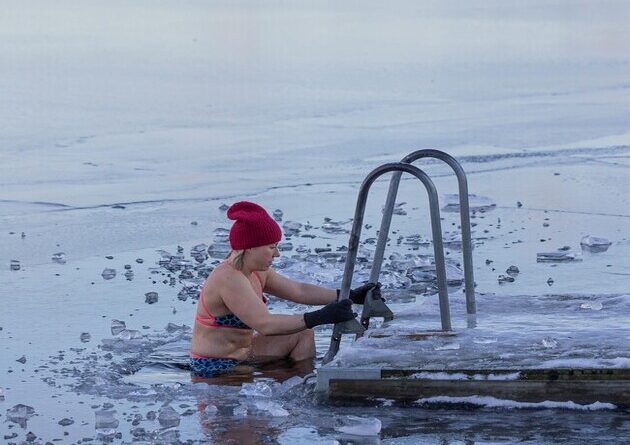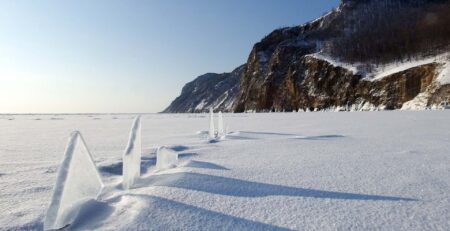Inflammation is your body’s ancient, loyal defense force. When you get injured or sick, it sends in the troops—redness, heat, swelling, and pain—to cordon off the area and begin repairs. It’s a life-saving system.
But in our modern world, this defense force often refuses to stand down, just like a rogue militia. Chronic, low-grade inflammation becomes a silent, smoldering fire linked to everything from aching joints and slow recovery to more serious systemic diseases.
This is where the cold plunge steps in, not as a simple numbing agent, but as a sophisticated commander that can issue a stand-down order to this overzealous army.
Table of Contents
The Shock and the Calm: A Two-Phase Anti-Inflammatory Strategy
The impact of a cold plunge on inflammation unfolds in two phases: the immediate shock and the long-term adaptation.
Phase 1: The Immediate Inflammatory “Reset”
The moment you immerse yourself in cold water, your body perceives a threat. Instantly, it triggers a sharp, acute inflammatory response—a spike in pro-inflammatory cytokines (the chemical messengers of inflammation) and a surge in stress hormones.
That might sound counterproductive, but it’s a crucial part of the process. Think of it like rebooting a frozen computer. You’re creating a controlled, system-wide inflammatory event that is brief, intense, and, most importantly, meaningful. The body has a clear reason for this response: the cold.
The moment you get out, the threat is gone. The body, now in recovery mode, initiates a powerful compensatory response. It floods the system with anti-inflammatory cytokines and other healing molecules. This is the “after-drop” glow body effect of cold plunging experienced by regular plungers. It’s not just a feeling; it’s the physical sensation of your body actively dousing its own inflammatory flames. Scientific studies on athletes show that cold water immersion after intense workouts significantly lowers markers of muscle damage and inflammation, such as C-reactive protein (CRP), leading to faster recovery and reduced soreness.
Phase 2: The Long-Term Adaptation
This is where the real magic happens for chronic inflammation. When you make diving into your ice bathtub a consistent practice, your body adapts. It learns from this repeated cycle of controlled stress and recovery. Over time, the system becomes more efficient and resilient.
Research, including studies on winter swimmers, has shown that regular exposure to cold water can lead to a heightened baseline of anti-inflammatory cytokines and a more tempered response to inflammatory triggers overall. Your body’s defense force becomes better trained. It learns not to overreact to minor provocations, saving its full strength for genuine threats. Think of it as recalibrating your body’s internal thermostat, turning the constant simmer of inflammation down to a steady, balanced warmth.
The Vascular Gymnastics: Flushing the System
Cold plunging also performs a kind of mechanical flush for your body. The initial plunge causes dramatic vasoconstriction—your blood vessels tighten and shunt blood away from your extremities to protect your core. When you get out and begin to warm up, the body performs vasodilation, forcing blood back out to the limbs.
This process acts like a pump, pushing fresh, oxygen-rich blood through your tissues and flushing out the metabolic waste and inflammatory compounds that have accumulated. This powerful circulatory cleanse reduces localized swelling and delivers the nutrients needed for repair. It’s why many athletes describe cold plunges as “a reset button for recovery.”
Beyond the Muscle: A Systemic Effect
While the most common benefits of cold plunging are for sore muscles and joints, the anti-inflammatory effects are systemic. The inflammation that cold plunges help to regulate isn’t just in your bicep after a workout; it’s the same kind of systemic inflammation linked to conditions like metabolic syndrome, heart disease, and neurodegenerative disorders. By regularly engaging this anti-inflammatory pathway, you are potentially cooling the smoldering fires that contribute to long-term health decline.
A Necessary Nuance
It’s crucial to understand that cold plunges are a tool, not a cure-all. The inflammation from a fresh, acute injury sometimes needs that initial inflammatory response to heal. Using ice too soon can sometimes interrupt the natural healing process. This is why the context of recovery and chronic inflammation is key.
For the smoldering, systemic fire of chronic inflammation, however, the ice bath is a powerful, self-induced reset. It’s a way to speak the language of your own immune system, using the stark clarity of cold to command a state of calm, repair, and balance from the inside out.
For the modern body constantly fighting invisible fires, cold plunging offers a simple yet profound message: stand down, breathe, and heal.
Suggested Reading
- A Foundational Study: “The Effect of Cold Water Immersion on Recovery from Exercise-Induced Muscle Damage” – This review consolidates evidence showing how CWI reduces inflammatory markers and speeds recovery, providing a clear model of its efficacy.
- The Broader Picture: “Cold Water Swimming and Its Impact on Inflammatory Status” – Research on winter swimmers provides compelling evidence for the long-term adaptive anti-inflammatory response.












Leave a Reply